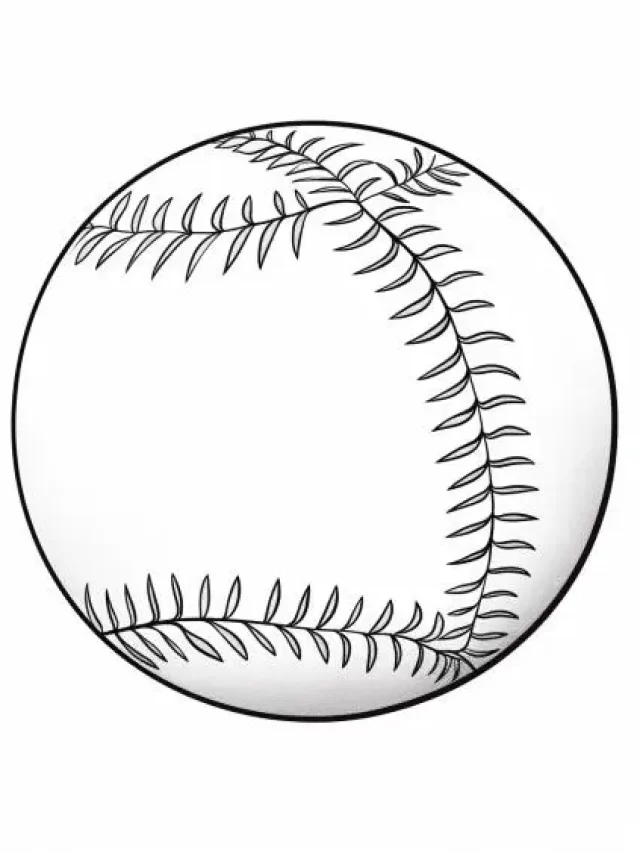Baseball Team Sizes: How Many Players?

In the world of baseball, it’s not just about bat and ball—it’s about teamwork, strategy, and the perfect blend of talents. Have you ever wondered how many players make up a standard baseball team? Well, you’ve come to the right place because we’re about to dive into “The Ultimate Guide to How Many Players on a Baseball Team.”
Baseball, often referred to as America’s favorite pastime, is a sport that boasts a rich history and a passionate fan base. At its core, baseball is a team sport that thrives on collaboration and coordination. But before we step onto the field and explore the intricate dynamics of a baseball team, let’s answer the fundamental question: how many players are on a standard baseball team?
To understand the essence of baseball, you must first grasp the concept of team size. It’s not just a random number; it’s the backbone of the sport. So, how many players make up a standard baseball team?
In Major League Baseball (MLB), which represents the pinnacle of the sport, a standard team comprises 25 players. These individuals bring a diverse set of skills and abilities to the field, and they play different positions that collectively make up the team.
Before we delve deeper into the significance of team size, let’s take a quick look at the different roles and positions that players assume in a baseball team.
Read More: Breaking in a Baseball Glove
Exploring Player Roles and Positions
A baseball team is like a well-choreographed dance, where each player has a specific role and position. These positions are not just names; they define the responsibilities and strategies employed by each player. Let’s take a closer look:
- Pitcher: The pitcher is at the heart of every baseball game. They stand on the pitcher’s mound and deliver the ball to the batter. Pitchers are known for their accuracy, speed, and a wide array of pitches that can baffle even the best hitters.
- Catcher: Positioned right behind home plate, the catcher plays a crucial role in the game. They not only catch pitches from the pitcher but also communicate with the pitcher to decide on pitch selection. Catchers are also responsible for throwing out runners attempting to steal bases.
- Infielders: These players are stationed in the infield, which includes first base, second base, shortstop, and third base. Infielders need quick reflexes, strong arms, and excellent fielding skills. They are the defense’s first line of response against batted balls.
- Outfielders: Positioned in the outfield, these players cover left field, center field, and right field. Outfielders must cover a lot of ground and have strong throwing arms. Their primary job is to catch fly balls and prevent hits from turning into extra bases.
- Designated Hitter (DH): In some leagues, teams have a designated hitter who bats in place of the pitcher. This allows teams to have a strong hitter without compromising the pitcher’s spot in the batting order.
- Bench Players: Beyond the starting lineup, teams have bench players who are ready to step in when needed. These players provide depth and flexibility to the team.
Understanding these roles is essential to appreciating the complexity of a baseball team. But why is the number of players set at 25 in MLB? To answer that question, let’s delve into the historical perspective of team size.
Historical Perspective
Baseball, like many other sports, has evolved over the years. The number of players on a team, too, has undergone changes to accommodate the changing dynamics of the game. Let’s take a journey through time and explore how team sizes in baseball have evolved.
Early Days: In the early years of baseball, teams often had smaller rosters, usually around 9 players. These small teams relied heavily on the skills of individual players, and substitutions were infrequent.
The Emergence of Pitching: As the art of pitching developed, teams recognized the need for specialized pitchers. This led to the inclusion of more players, especially pitchers, in team rosters.
Expansion Era: With the expansion of the sport, particularly in the Major Leagues, team sizes increased to 25 players. This larger roster allowed for more strategic gameplay, specialized roles, and increased player rotation.
Modern Era: Today, in Major League Baseball, teams continue to field 25 players. This number strikes a balance between having enough depth to handle various situations during a game and ensuring that the roster isn’t too large.
Understanding the historical context of team sizes in baseball helps us appreciate the reasons behind the current standard. But it’s not just about numbers; it’s also about the dynamics that team size brings to the sport. Let’s explore these dynamics in the next section, “Team Dynamics.”
Also Read: Duration of Baseball Games
Team Dynamics
Team size in baseball isn’t just a matter of counting heads; it’s a strategic element that shapes the game’s dynamics. Here, we’ll uncover how team size impacts gameplay, strategy, and the overall experience of baseball.
- Player Rotation: With a roster of 25 players, teams have the flexibility to rotate players based on specific situations. This rotation allows teams to optimize their lineup for offense and defense. For example, a pinch hitter might replace a less effective batter in a critical situation.
- Pitching Strategy: Pitchers play a pivotal role in baseball, and their numbers on the roster are carefully managed. Teams have starting pitchers, relievers, and closers, each with a specific role. The depth of the pitching staff is critical for managing a game effectively.
- Injury Contingency: Injuries are a part of sports, and having a larger roster ensures that teams can replace injured players promptly. This keeps the team competitive throughout the season.
- Bench Strength: Bench players provide options for substitutions and allow managers to strategize according to the opponent’s strengths and weaknesses. A deep bench is essential for success.
- Specialized Roles: The 25-player roster allows for specialized roles, such as defensive substitutions or pinch runners, in critical game situations.
- Team Chemistry: The dynamics of a team, both on and off the field, contribute to success. A balanced team size fosters better chemistry and camaraderie among players.
Team dynamics in baseball are a delicate dance of strategy, talent, and teamwork.
In Crux
In this comprehensive guide, we’ve explored the fascinating world of baseball team sizes. From the historical evolution of team sizes to the intricate dynamics that define the sport, we’ve uncovered the significance of having 25 players on a standard baseball team.
Baseball is more than just a game; it’s a testament to the power of teamwork, strategy, and individual excellence. The 25-player roster in Major League Baseball represents the delicate balance between having the right players for the right moments and maintaining a cohesive team.
So, the next time you watch a baseball game, take a moment to appreciate the strategy behind each substitution, the precision of every pitch, and the camaraderie that drives the team forward.
Whether you’re a seasoned baseball enthusiast or new to the sport, we hope this guide has shed light on the intriguing world of baseball team sizes. For more insights into the world of baseball and related topics, don’t forget to explore our collection of internal blogs.
Thank you for joining us on this journey through baseball’s inner workings. Play ball!
Also Read: Understanding the Basics of Baseball
FAQs about Baseball Team Size
[sp_easyaccordion id=”655″]

Meet Daniel Anderson, the heart and soul behind Baseball Pro Picks. At 49, Daniel’s life has revolved around baseball, a passion that’s as strong today as it was when he first fell in love with the game. Living in the USA, Daniel has dedicated countless hours to watching, analyzing, and understanding every pitch, hit, and home run, making almost no game missed. His deep-rooted love for the sport is matched only by his commitment to sharing insightful, expert analysis with fellow baseball enthusiasts. With decades of experience and a keen eye for the game’s nuances, Daniel brings a unique perspective that enriches Baseball Pro Picks. Trust Daniel to guide you through the intricacies of baseball with the authority and trustworthiness of a true aficionado.












